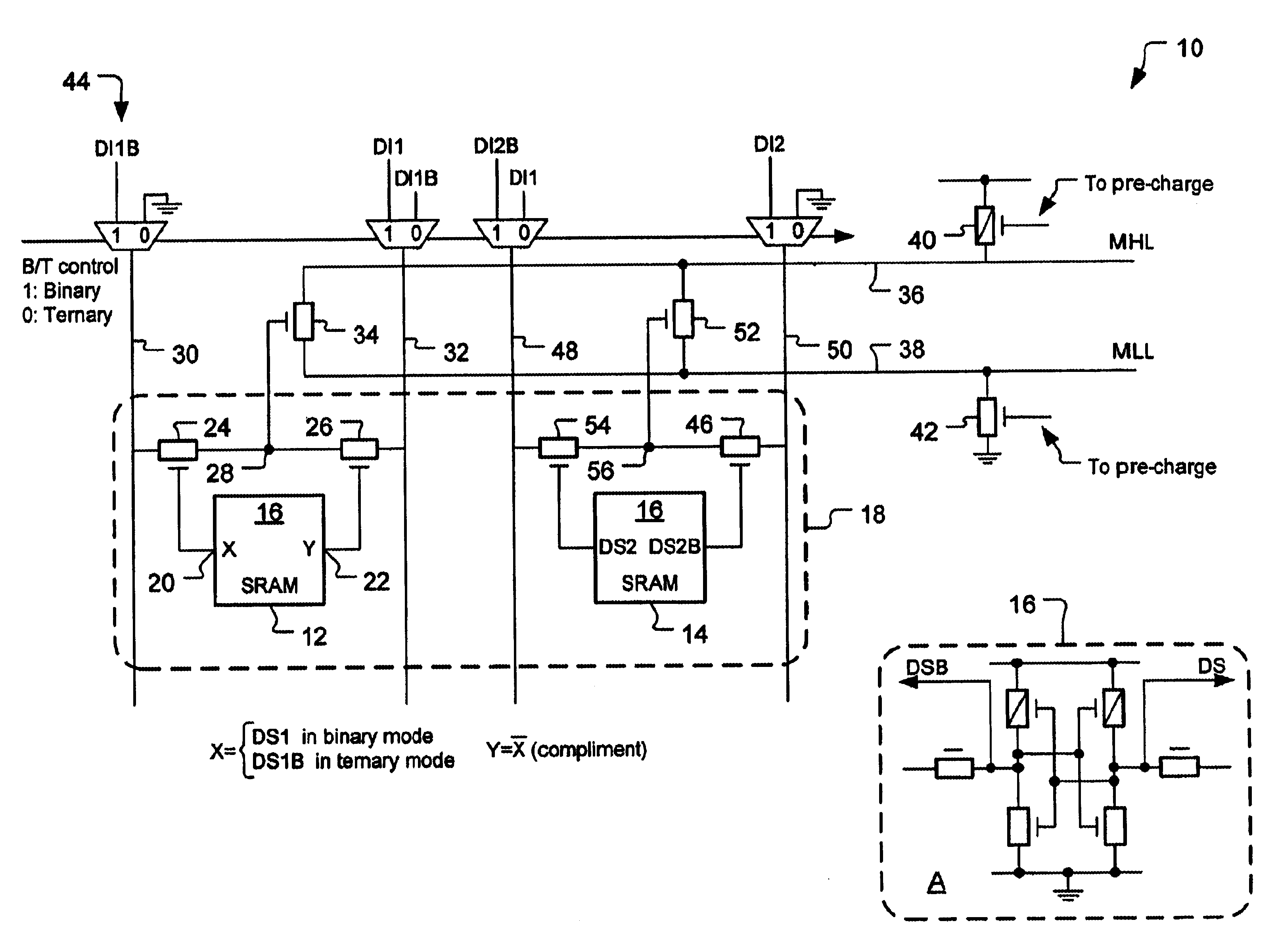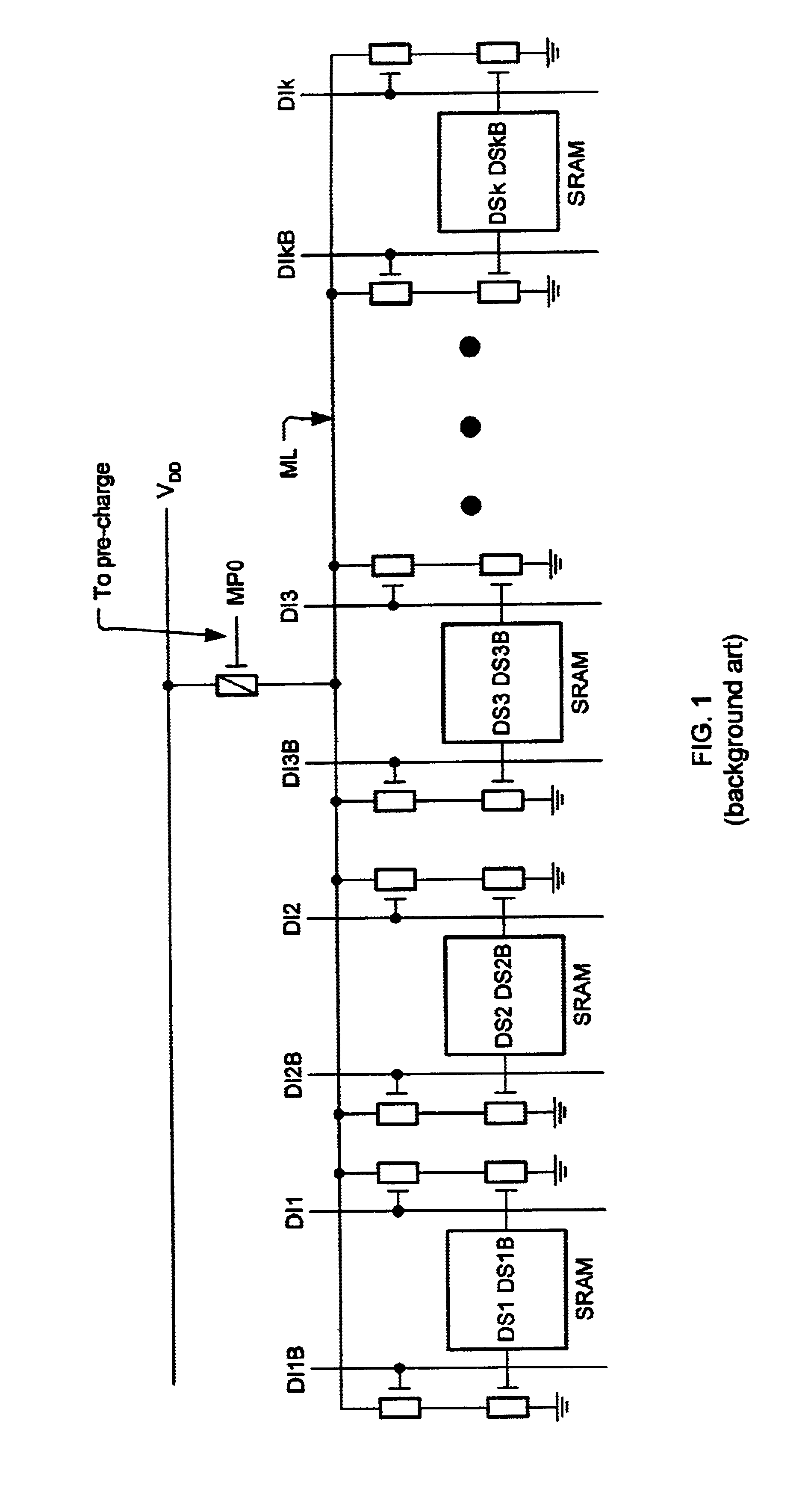Dual match-line, twin-cell, binary-ternary CAM
a twin-cell, binary-ternary cam technology, applied in the field of static information storage and retrieval systems, can solve the problems of consuming a lot of power, unable to efficiently use the die area, and unable to achieve the effect of reducing the number of approaches to match detection, reducing the number of approaches, and maximizing the utilization of all memory cells
- Summary
- Abstract
- Description
- Claims
- Application Information
AI Technical Summary
Benefits of technology
Problems solved by technology
Method used
Image
Examples
Embodiment Construction
A preferred embodiment of the present invention is a dual-match line, twin-cell binary-ternary CAM. As illustrated in the various drawings herein, and particularly in the view of FIG. 4, embodiments of the invention are depicted by the general reference character 10.
In applications where both binary and ternary CAM is required on a single chip, it is important that both binary and ternary modes are supported in the most efficient manner. One method to implement such a "dual function" CAM is shown in FIG. 3. The layout of the CAM array here is identical to that of a binary CAM, so that it functions exactly like a binary CAM when required. To use the array as a ternary CAM, one may simply ground the unused differential lines and feed the input word through the central data-in lines with multiplexers, as shown. The result is then a ternary cell, which functions exactly the same as the case in FIG. 2.
It is thus apparent that such utilization of a twin-cell to perform binary / ternary dual...
PUM
 Login to View More
Login to View More Abstract
Description
Claims
Application Information
 Login to View More
Login to View More - R&D
- Intellectual Property
- Life Sciences
- Materials
- Tech Scout
- Unparalleled Data Quality
- Higher Quality Content
- 60% Fewer Hallucinations
Browse by: Latest US Patents, China's latest patents, Technical Efficacy Thesaurus, Application Domain, Technology Topic, Popular Technical Reports.
© 2025 PatSnap. All rights reserved.Legal|Privacy policy|Modern Slavery Act Transparency Statement|Sitemap|About US| Contact US: help@patsnap.com



